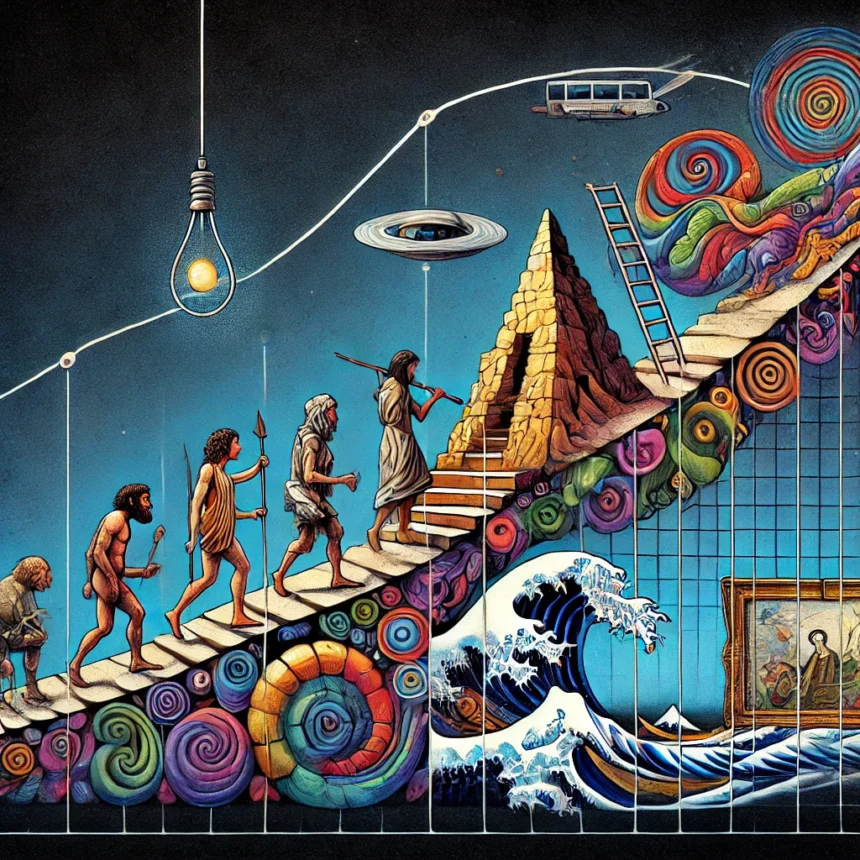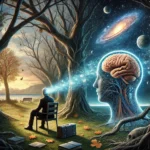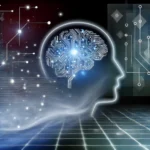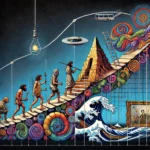From the moment the first Gaians began to engrave images in stone, to the creation of virtual worlds that transcend the physical, their cultural evolution has been a fascinating testament to creativity and adaptability. In this historical tour, we explore five cultural milestones that encapsulate how this civilization has transformed its way of expressing itself, leaving a legacy that connects its past, present and future.
From engravings on stone to pixels on a screen, each work is a reminder of their ability to dream, innovate and adapt.
The cave paintings of Lascaux (17,000 B.C.
Art as a connection with the sacred
In the depths of a cave in what is now France, the early Gaians etched their perception of the world. The Lascaux paintings, with their imposing bison, deer and horses, not only show their artistic skill, but also their spiritual connection with nature.
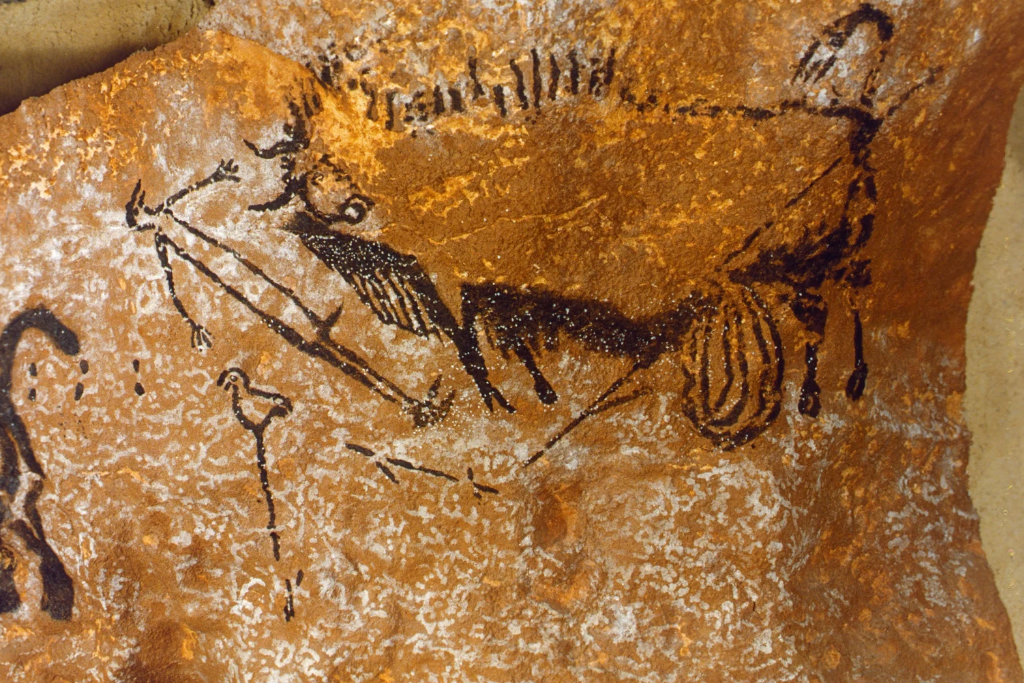
These works are more than simple representations; they are symbols of an attempt to understand and master an unpredictable environment.
Lessons from Lascaux:
The innate need to tell stories and make sense of chaos.
The symbiotic relationship between humans and their environment, where art acts as a bridge between the two.
The Great Pyramid of Giza (2,560 BC)
Architecture as a manifestation of power and eternity
Moving forward millennia, we find the Great Pyramid of Giza, a testament to the ambition and ingenuity of the Gaians. Erected to honor a pharaoh, this structure is an architectural achievement that demonstrates the Gaians’ mastery of engineering and their obsession with immortality. Although conceived as a funerary monument, its cultural impact endures as a symbol of a civilization that sought to transcend mortality.
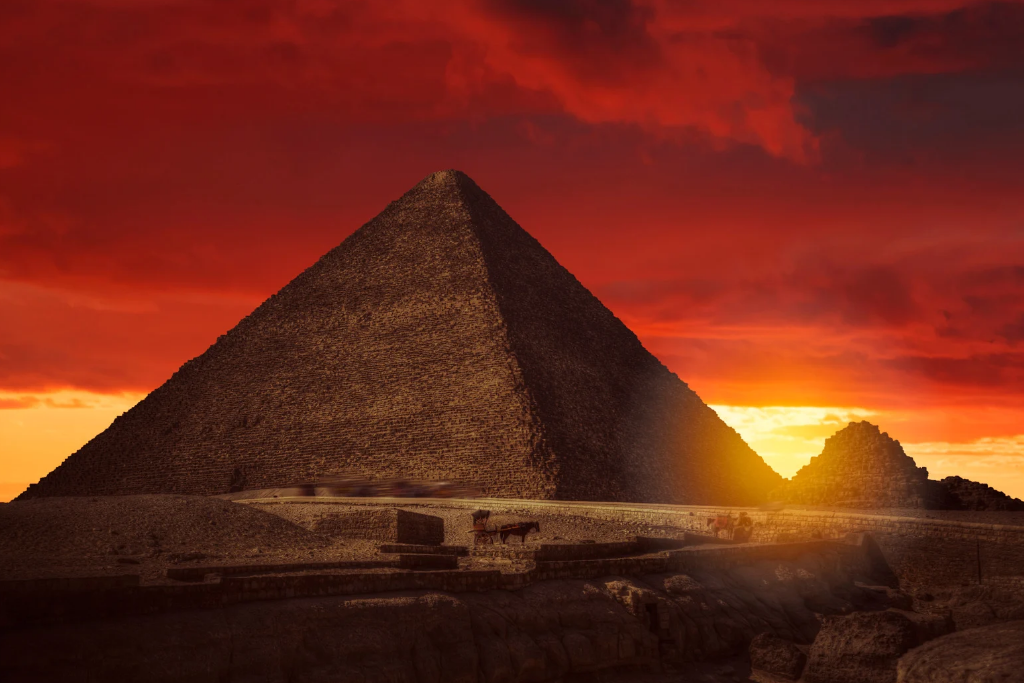
Lessons from Giza:
The desire to leave an eternal imprint in a transitory world.
The ability to mobilize resources and knowledge to achieve the seemingly impossible.
Sistine Chapel (1508-1512)
The explosion of humanism and the reinterpretation of the cosmos
With the Renaissance, Gaians turned their attention back to themselves, exploring the potential of humanity through art and science. The Sistine Chapel, painted by Michelangelo, represents a high point in this era. Its ceiling, with images of the creation and fall of man, captures both the grandeur and fragility of the human being. Each brushstroke is a reminder of the emotional and spiritual complexity of the Gaians.
Lessons from the Sistine Chapel:
The revaluation of the individual and introspection as the engine of progress.
The capacity of art to question and reinterpret the great existential questions.
“Guernica” by Pablo Picasso (1937)
Art as a cry of protest
In the middle of the 20th century, humanity lived through some of its darkest moments. In this context, “Guernica” emerges as a piercing cry against the horrors of war. Picasso’s work, with its cubist style and fragmented images, reflects not only the physical destruction, but also the psychological suffering of a devastated society. It is a testimony of how art can be a tool of denunciation and a beacon of hope.
Which works will be remembered for millennia to come?
Lessons from Guernica:
The resilience of art in the face of oppression and barbarism.
The capacity of art to mobilize consciences and demand justice.
Beeple’s “Everydays: The First 5000 Days” (2021)
Digital art and the technological revolution
With the advent of the 21st century, Gaians have expanded their horizons into the digital world. Beeple’s work, a collage of 5,000 images created over 13 years, is not only a testament to artistic persistence, but also a symbol of the growing fusion between technology and creativity. Sold as an NFT (non-fungible token), this work marks the beginning of a new era, where art transcends the physical and becomes a global phenomenon accessible to all.
Lessons from Beeple:
The ability of art to adapt to technological advances.
The democratization of creativity and the redefinition of what it means to be an artist.
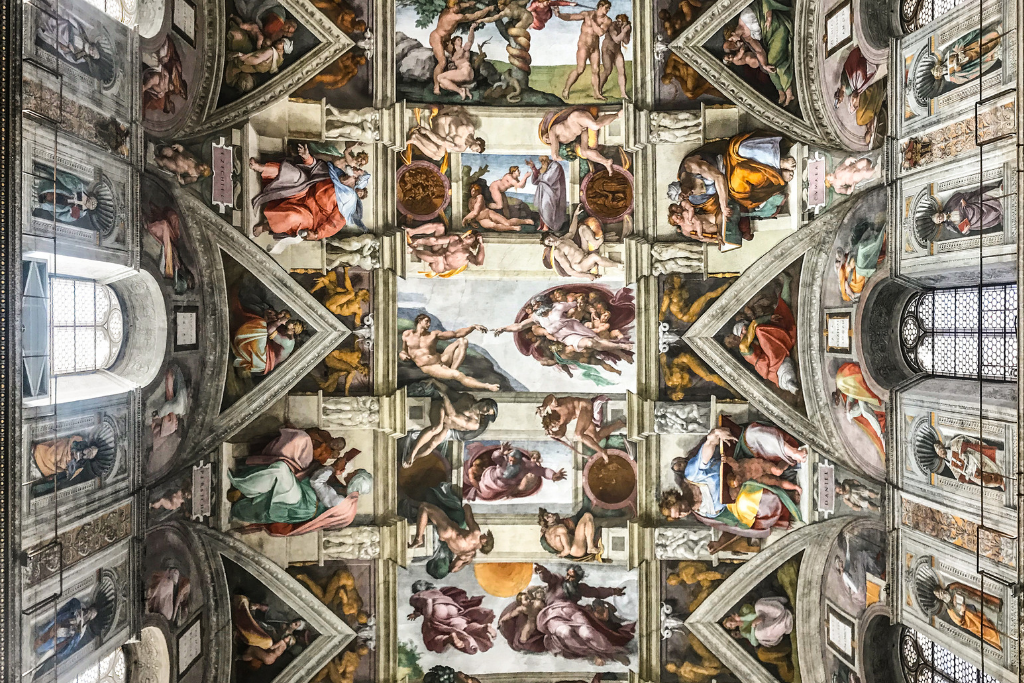
Conclusion: From the eternal to the ephemeral
In this journey, it is clear that Gaian art is a reflection of its evolution as a species. From stone engravings to pixels on a screen, each work is a reminder of their ability to dream, innovate and adapt. However, it also raises important questions: How will Gaians ensure that this artistic legacy is not lost in the noise of digital immediacy? Which works will be remembered for millennia to come?


